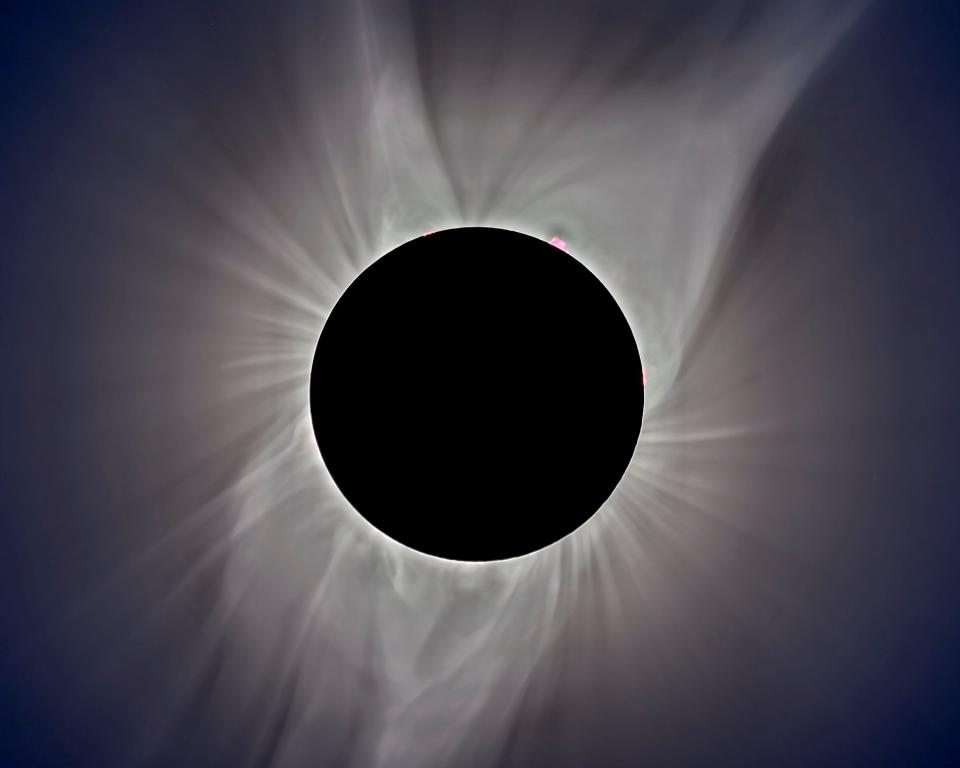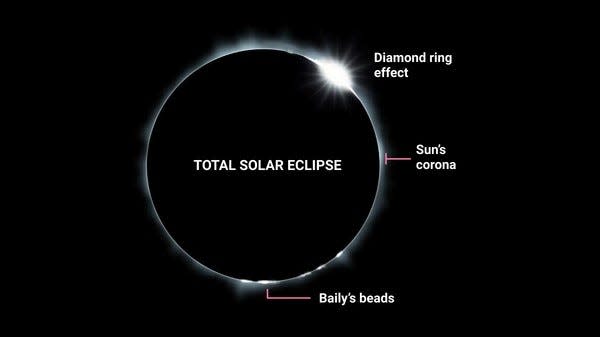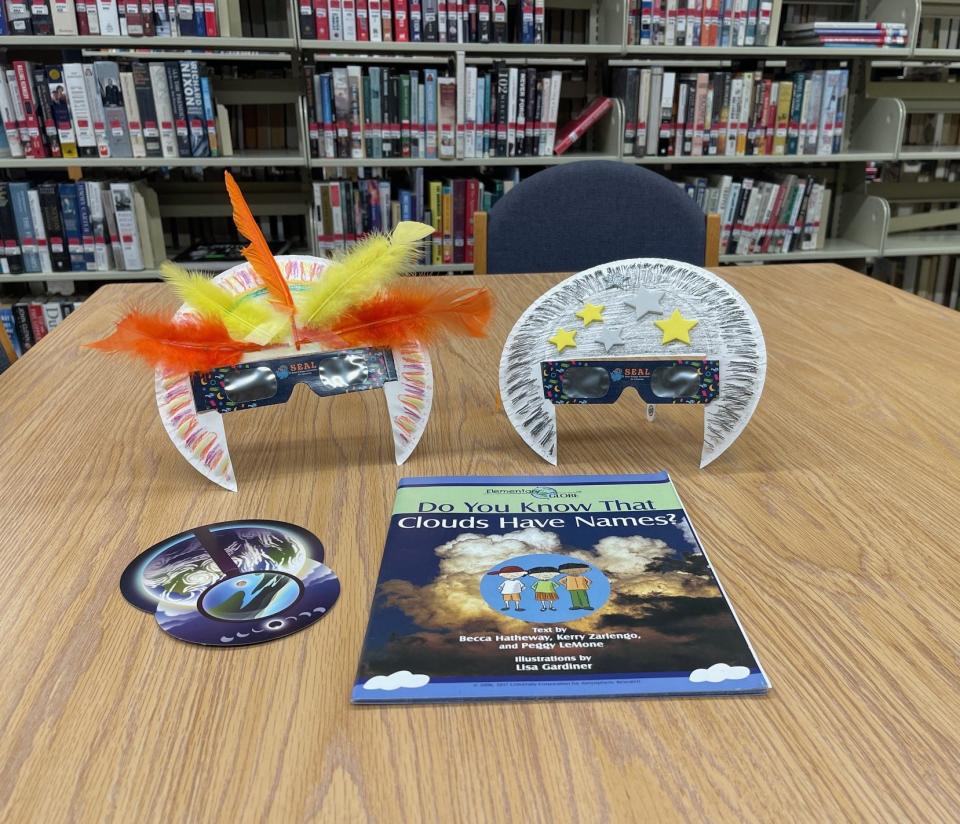Diamond rings, disco balls and Erie's total eclipse event - an astrophysicist explains
By now, if you don't know about the total eclipse, you're living in the dark. As an astrophysicist, there are some key points that I want to share to ensure full appreciation of this extremely rare event that we in this area are lucky enough to experience.
Although solar eclipses are fairly common, total solar eclipses in any given region are rare. In Erie and Crawford counties, the last total eclipse occurred in 1806, and after this month, the next one won't be until 2144. What makes a total eclipse special is that it's dark as night during the day, while the moon completely obscures the sun.

During a total solar eclipse, the darkest part of the moon's shadow, called the umbra, barely reaches the Earth. As a result, the path of totality covers only a small portion of the Earth. For example, only 0.5% of the Earth's surface falls within the path of totality this year. Given this small coverage, of the over 200 total solar eclipses that occur in the 21st century, only eight will be visible from somewhere in the continental United States — the next one being in 2044.
Where should you go to view the eclipse? Large, open areas are often best. In the moment before totality on April 8, look for the moon's shadow quickly approaching from the southwest before engulfing your surroundings. During the few minutes of totality, it can appear as if a sunset or sunrise is occurring simultaneously along the entire 360-degree horizon, as the sun illuminates the distant land and air in all directions.
Don't lose hope if it's cloudy. The sun's intense brightness enables its image to penetrate even moderately thick clouds. With some patience and luck, you may be able to monitor the partial stages, when the moon partially obscures the sun. Those partial stages last for about 75 minutes both before and after totality. So put on your eclipse glasses and try to spot the crescent sun regardless. If clouds preclude direct observations, the temperature fluctuation and sudden darkness of totality will still provide a memorable experience.
Diamond rings
Because the moon is not perfectly round, but instead has mountains and valleys, you should watch for a phenomenon known as Baily's beads in the several seconds before and after totality. These beads emerge when the sun is almost entirely covered by the moon, allowing only slivers of sunlight to pass through the lunar valleys. When Baily's beads shine brightly, the eclipse may resemble a diamond ring, with the beads representing the diamond and the emerging inner corona representing the ring.

Double diamond rings, with two prominent lunar valleys providing the light for the two diamonds, will be visible along specific narrow paths of land within the path of totality. Wonderfully, the Lake Erie shoreline along the entire northern border of Erie County closely follows one of these paths. According to eclipse predictions, the southernmost part of Presque Isle, as well as the bayfront shoreline in Erie, for example, may both afford a view of a double diamond ring at the beginning of totality. Other similar paths pass elsewhere through Erie County. If you want to seek out a double diamond ring, you can find maps online showing where to go.
Shadow bands
In the two minutes before and after totality, watch for "shadow bands" racing across the ground. These bands are alternating bright and dark regions at the edge of the darkest part of the moon's shadow, typically spaced inches apart. You may see them on any surface, but they're most easily seen on a white background. A fun activity with kids is to lay down a white sheet in an open space and try to spot these bands together. The closer the time is to totality, the easier these bands are to notice.
Animal behavior
Regardless of the cloud coverage, listen to and watch your surroundings, especially around totality. Do you hear the birds chirping more or less loudly? Do you see any animals acting erratically? Animals display a range of behaviors during a total eclipse. Some begin their nighttime routine as totality starts — certain birds quietly go back to their nests to roost, only to start singing loudly a few minutes later when the sun returns. Cows may return to the barn, thinking that it's milking time. Other animals, such as horses, may become anxious and start pacing or shaking when darkness falls. Pet dogs may react in a variety of ways or not at all, depending on their individual personalities, while pet cats are likely just to sleep through the event.
Homemade viewing - pinhole viewers, disco balls
Besides the standard eclipse glasses, pinhole viewers are a great, safe way to view the partial stages of the eclipse. Making a pinhole viewer is quick and easy, with many tutorials available online. For the most basic version, use a safety pin or thumb tack to poke a hole in a piece of paper. Face the paper toward the sun, and look for an image of the sun in the shadow of the paper. You can also look for pinhole projections of the sun in the shadows of everyday objects, such as kitchen colanders, trees, or your interlaced fingers.
An entertaining approach for viewing the partial stages on a clear day is with a disco ball. Each mirror tile struck by sunlight reflects an image of the sun, resulting in a plethora of crescent suns dancing across nearby surfaces, like the ground, fences, and trees. As long as you avoid staring directly at the disco ball, it provides an effortless way to monitor the eclipse.

While safe observation techniques are essential when any portion of the sun is visible, people should also realize that, when the sun is completely eclipsed, it is safe to remove those eclipse glasses and look directly at the skies. If you don't, you will miss the show! Just be sure to put those glasses back on, or use your pinhole viewer, the moment the sun begins to reemerge from behind the moon.
If it's a clear day
If you have a cloudless view of the eclipse during totality, you will be able to see the sun's atmosphere, called the corona, extending outward. Within it, look for small pink prominences and larger coronal loops poking out from the obscured sun before curving back to its surface. Other parts of the corona stream outward and converge toward a point, a feature that astronomers call a helmet.
While the sun's corona is arguably the best target of your attention during totality, a clear view of the skies presents an opportunity also to spot planets and stars. Venus will appear as a bright dot of light down and to the right of the eclipsed sun by 15 degrees, while Jupiter will be up and to the left by 30 degrees. To check their positions, you can use the simple trick that a fist held at arm's length covers 10 degrees. Closer to the horizon, along the same arc as Jupiter, the sun, and Venus, you'll find Saturn and the red planet Mars. The bright star toward the east, to the far left of the eclipsed sun, is Rigel in the foot of Orion the Hunter. With binoculars, you may even see the comet 12/P Pons-Brooks as a faint hazy glow to the right of Jupiter — just be sure to use unfiltered binoculars only during totality to avoid damaging your eyes.
If you decide to take pictures of the partial eclipse, use a filter over your camera lens. Even with a filter, the sun may still overexpose your image, and you should be prepared to adjust settings manually.
Research has shown that human beings can have deeply emotional reactions to extraordinary natural events like a total eclipse. If you want to record it, consider focusing on the people you are with. Place your camera down facing you and your group, and then hit record to capture the "oohs" and "ahhs" for lasting memories.
Jamie Lombardi, Ph.D., is an astrophysicist and professor of physics at Allegheny College in Meadville, Pennsylvania, located in the path of totality. With degrees in physics and astronomy from Princeton and Cornell Universities, Dr. Lombardi is a noted expert who focuses his research on interactions between stars.
This article originally appeared on Erie Times-News: Erie solar eclipse 2024, look for double diamond rings, shadow bands

